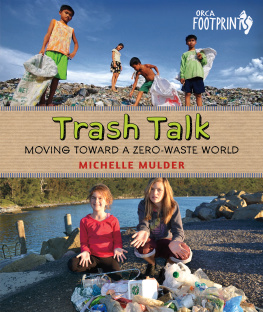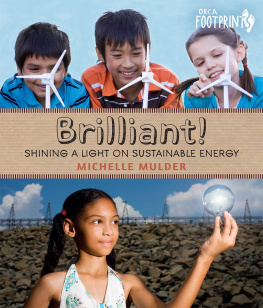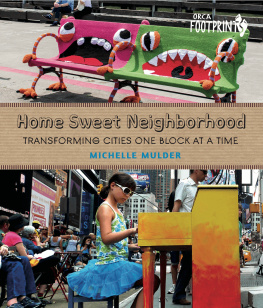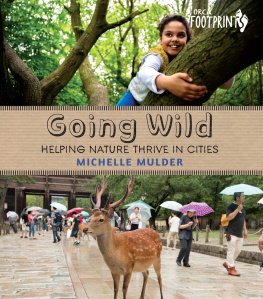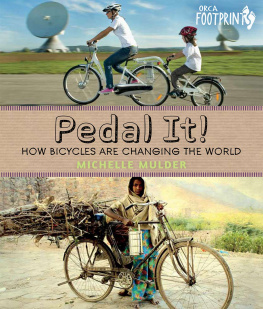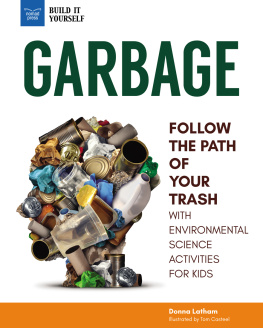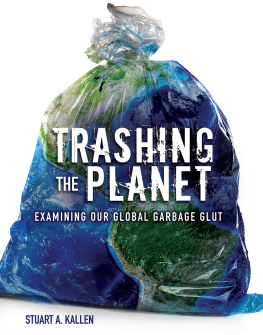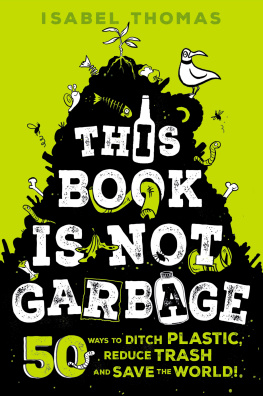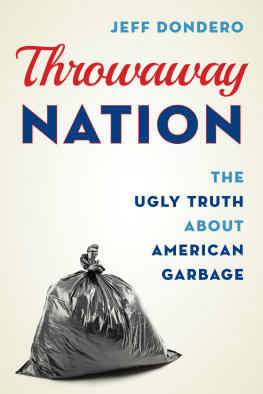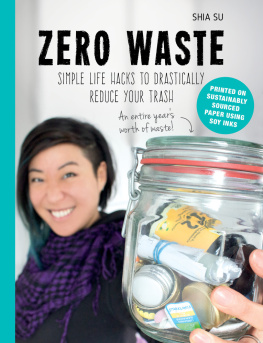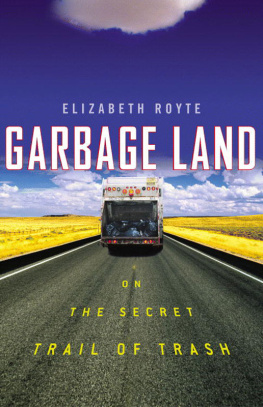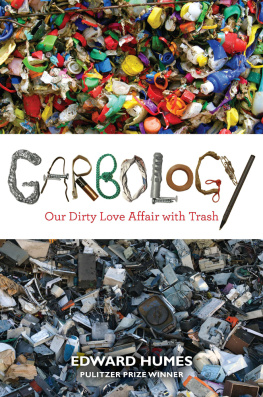Text copyright 2015 Michelle Mulder
All rights reserved. No part of this publication may be reproduced or transmitted in any form or by any means, electronic or mechanical, including photocopying, recording or by any information storage and retrieval system now known or to be invented, without permission in writing from the publisher.
Library and Archives Canada Cataloguing in Publication
Mulder, Michelle, 1976, author
Trash talk : moving toward a zero-waste world / Michelle Mulder.
(Orca footprints)
Includes index.
Issued in print and electronic formats.
ISBN 978-1-4598-0694-8 (epub)
1. Refuse and refuse disposalJuvenile literature.
I. Title. II. Series: Orca footprints
td792.m84 2015 j363.72'8 c2014-906687-2 c2014-906688-0
First published in the United States, 2015
Library of Congress Control Number: 2014952068
Summary: People all over the world are working to keep our planet from drowning in a sea of garbage.
Orca Book Publishers gratefully acknowledges the support for its publishing programs provided by the following agencies: the Government of Canada through the Canada Book Fund and the Canada Council for the Arts, and the Province of British Columbia through the BC Arts Council and the Book Publishing Tax Credit.
Cover images by Getty Images and Gavin Swan/Two Hands Project
Back cover images (top left to right): Dreamstime, Artechstudios.ca, Ziga Smidovnik, (bottom left to right): Peter Bennett, Landfillharmonicmovie.com, Amy Hansen
Design and production by Teresa Bubela and Jenn Playford
Ebook by Bright Wing Books (brightwing.ca)
Orca Book Publishers PO Box 5626, Stn. B Victoria, BC Canada v8r 6s4
Orca Book Publishers PO Box 468 Custer, WA USA 98240-0468
orcabook.com
Printed and bound in Canada.
18 17 16 15 4 3 2 1
Introduction
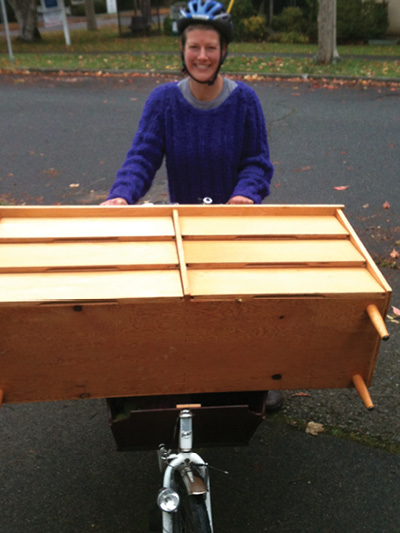
We found this dresser on a sidewalk just a few blocks from home. (Thank goodness it was close by. It was heavy!) GASTN CASTAO
H ave you ever found treasure in a trash bin? Its a risky activity, of course. Garbage is smelly, germy and often dangerous. Thats why, when I was 20, I didnt tell my parents Id started Dumpster diving.
I lived in a building with hundreds of other university students. In April, most of us moved away for the summer, and whatever didnt fit into suitcases got tossed. On my first Dumpster dive, I found seven novels, a set of speakers, a frying pan and an unopened box of Earl Grey teaall perfectly good. Ive been thinking about trash ever since.
What makes something garbage? I used to think trash was something no one could use anymore. Boy, was I wrong. Wait until you see how people use garbage! In Paraguay, old water pipes become saxophones. In Haiti, worn-out tires turn into house walls. Around the world, fishermen collect abandoned fishing nets to be made into carpets for office buildings. With some creative thinking, garbage doesnt have to exist at all. Want to see what that would look like? Grab a cloth bag and a reusable water bottle and follow me!
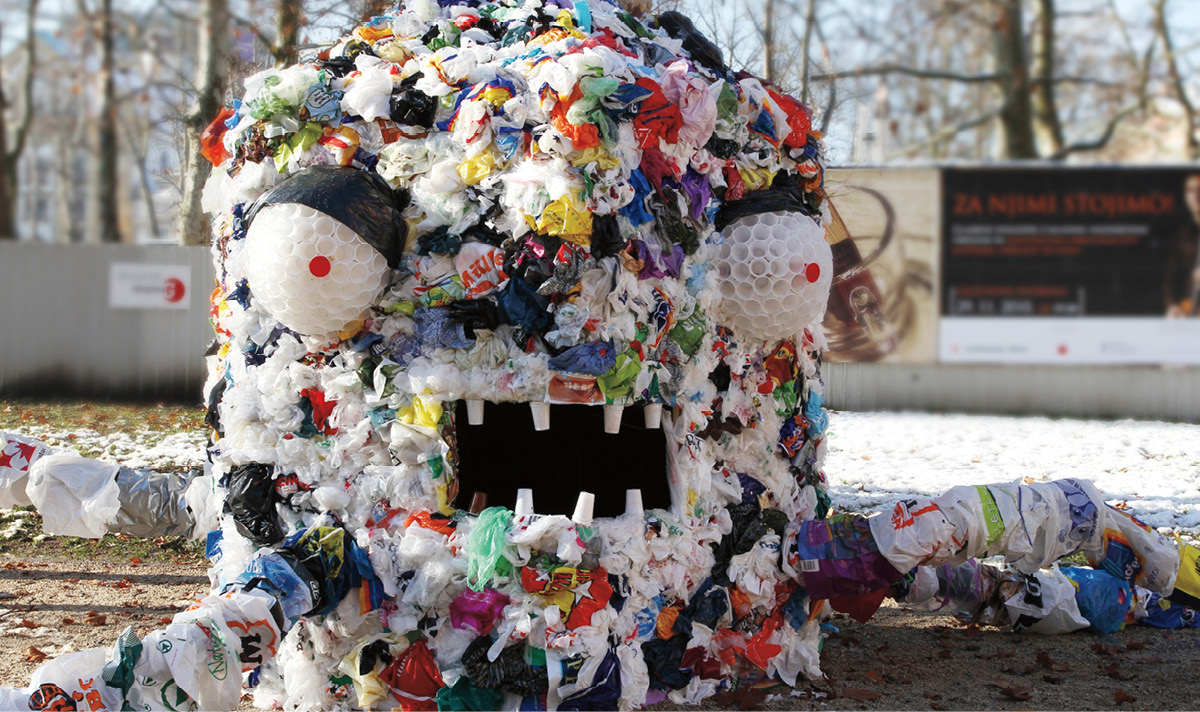
Beware the scary waste monster! This awareness-raising sculpture spreads its plastic tentacles through the streets of Ljubljana, Slovenia. ZIGA SMIDOVNIK
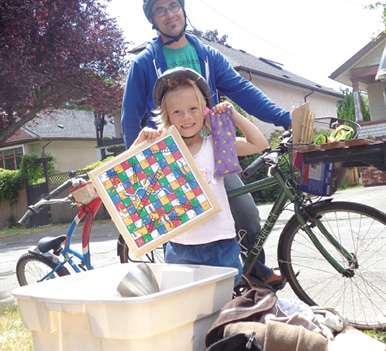
My family always looks out for free piles on weekend bike rides. MICHELLE MULDER
Take in the Trash!
My daughter loves shouting Free pile! from her seat on our bicycle. Where we live in Victoria, British Columbia, people often leave unwanted items on the side of the road with a sign saying Free. Maia and I screech to a stop and hop down to investigate. So far, her favorite find has been a big teddy bear in perfect condition, but weve taken home everything from plates to plants to furniture.
CHAPTER ONE
A Wealth of Waste
A MYSTERIOUS NEW INVENTION
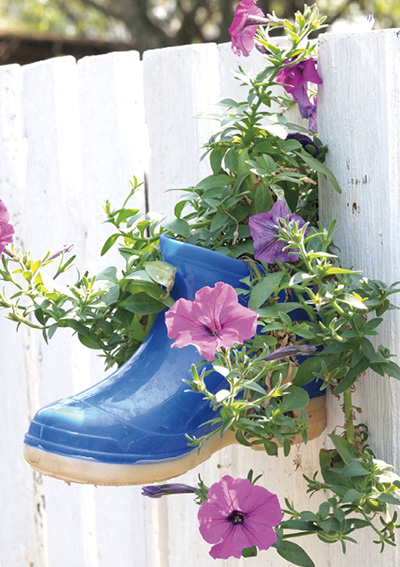
Who says boots are only for feet? Creative container gardening turns broken boots into fancy flowerpots. POOPIX/ISTOCK.COM
What is garbage anyway?
Picture an empty yogurt container. It could be trash. But it could also become a pencil holder or a flower vase or a container for picking blackberries. An item only becomes trash when we decide that its no longer useful for anything else. People have always tossed trash, but a few human inventions have really made it pile up.
INTO THE BUSH
If you were living hundreds of thousands of years ago, you might have woken up each morning in a cave. Breakfast would be the roasted leg of a wild bird you had hunted the day before. When your belly is full, you look down at the bone in your hand. What could you use it for? Should you tie your hair around it to keep loose strands out of your face? Or should you dip the bone in ash and use it to draw pictures on the wall? Then again, maybe it could be a piece for a new game to play with the other kids.
Just as youre imagining the rules of your new game, your mother grunts at you. Its time to feed the fire, pick the bugs out of your little brothers hair and find some berries for lunch. You toss the bone into the bush until later. If you forget about it, nature will turn it into soil again (more about that in Chapter Two). But chances are youll remember. Stores havent been invented yet, and if you want a hair clip or a pencil or a toy, youve got to make it yourself.
RUBBISH, RATS AND RASHES
Back in the days of living in caves, people traveled around a lot, following their food with the changes of the seasons. Then, about 12,000 years ago, people in the Near East (western Asia) started farming. For the first time ever, people began living in one place all year round. Cities formed, and city dwellers did what theyd done in the countryside: they threw what they didnt want out the window. But this time, their chicken bones and carrot tops didnt land in the bush. They landed in the street.
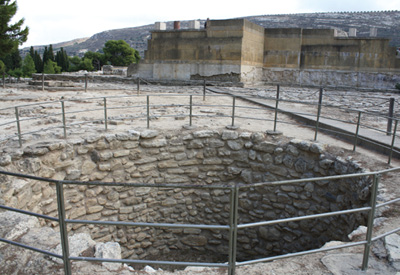
Ancient Minoans buried trash in pits like this one. YVAN POINTURIER
Each civilization had its own ideas about what to do with garbage. The Minoan people (who lived on the island of Crete about 5,000 years ago) tossed their trash in a pit outside their settlement and covered it over with dirt to keep down the smell. Two thousand years ago, the Chinese composted food scraps and recycled metals like bronze into new tools. Around the same time, on the other side of the planet, the Mayans of Central America were recycling some of their garbage and burying or burning the rest. Mostly, though, for thousands of years, trash landed in the street.
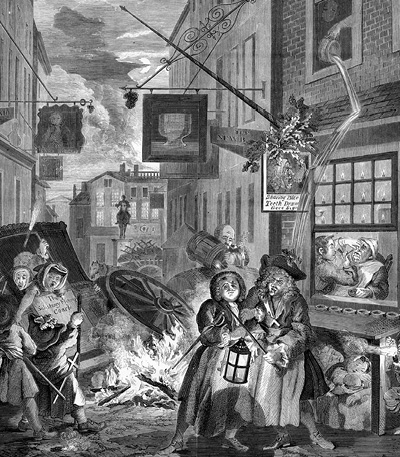
For hundreds of years, garbage filled the streets of London. Evening strolls were more enjoyable if you held your nose! LEBRECHT MUSIC & ARTS
In 1280, the citizens of London, England, were told to stop tossing waste out the window. No one suggested anywhere else to put the trash, though, so most people ignored the new rule. Cats, dogs, pigs, rats, mice, bugs and bacteria feasted on the stuff in the streets. Not long afterward, in Paris, France, the citys defenders complained that big piles of trash at the city gates blocked their view of invaders. Worried about the safety of their city, people cleared the gates but left rubbish in the rest of the streets. The rubbish attracted rats, which had fleas, which carried a disease called the bubonic plague. Between 1347 and 1352, one-third to one-half of Europes population died of this disease.

